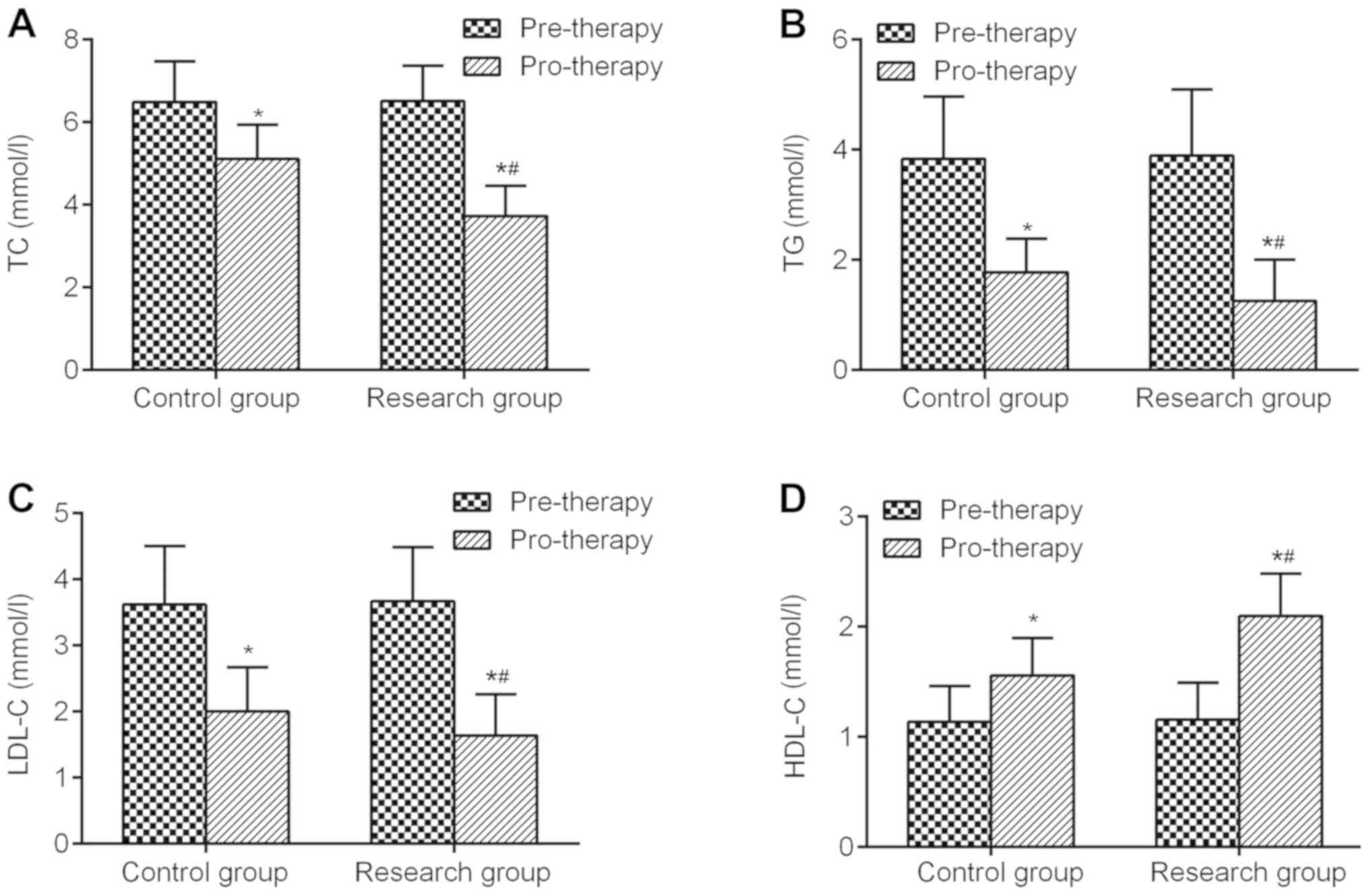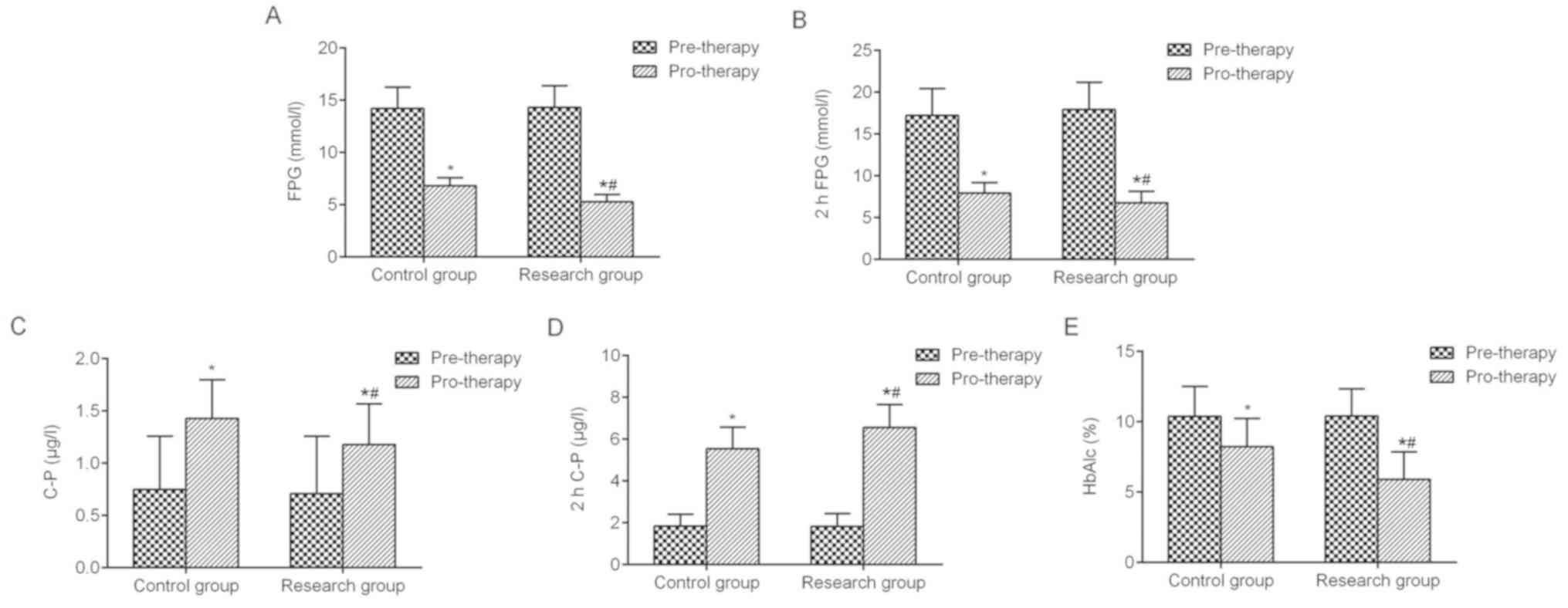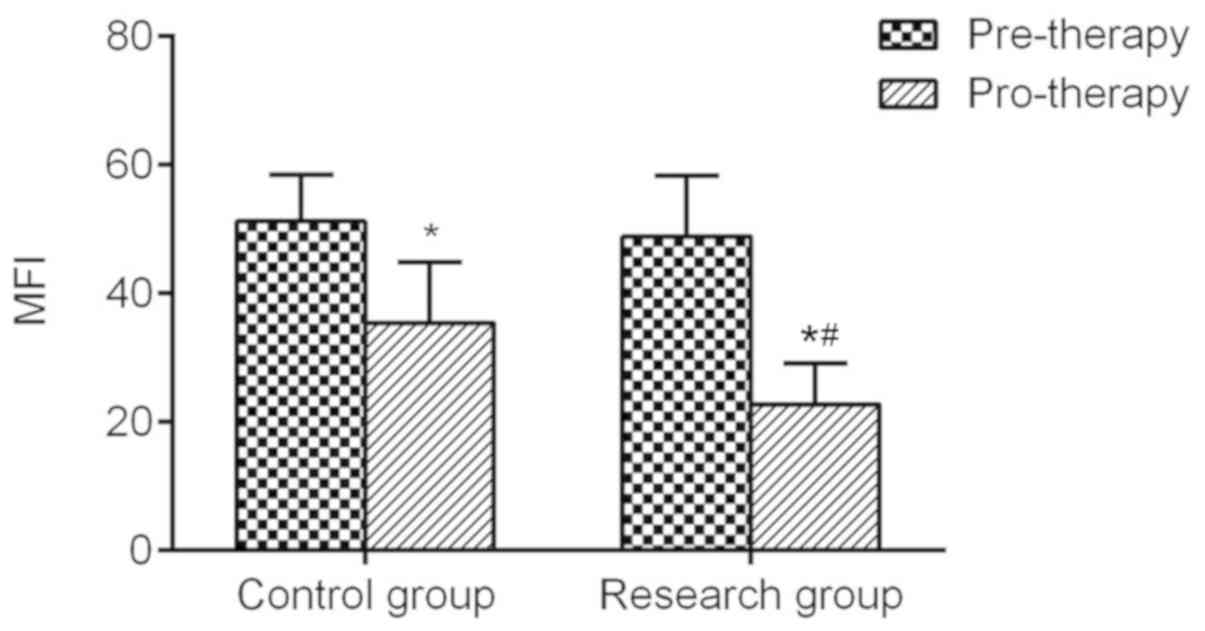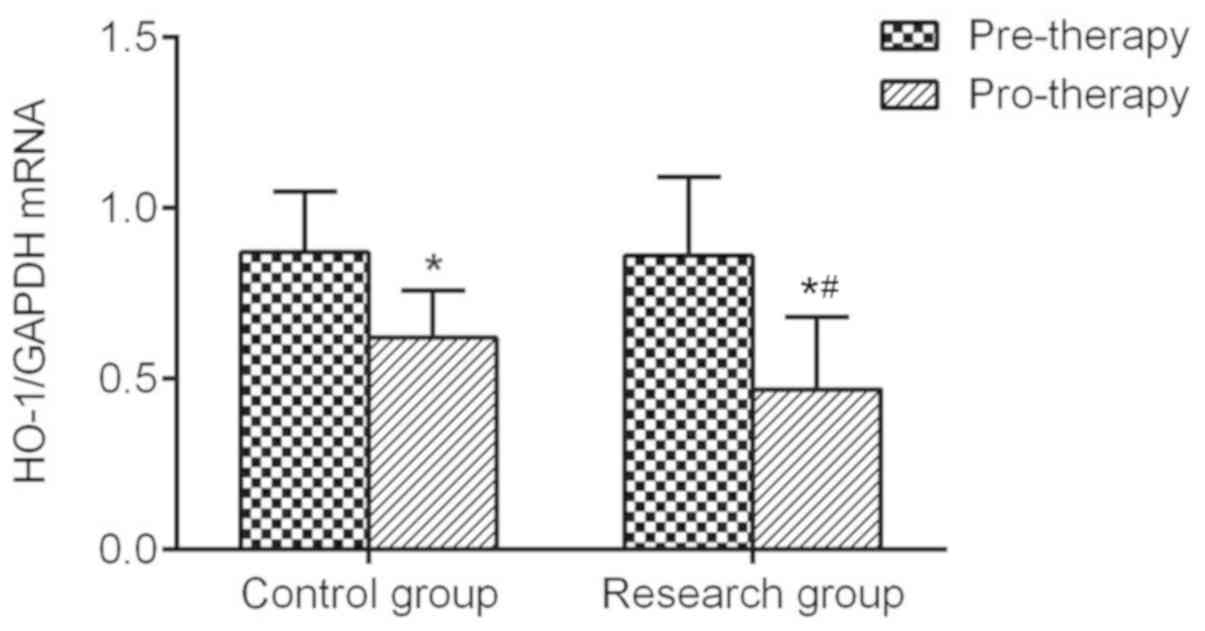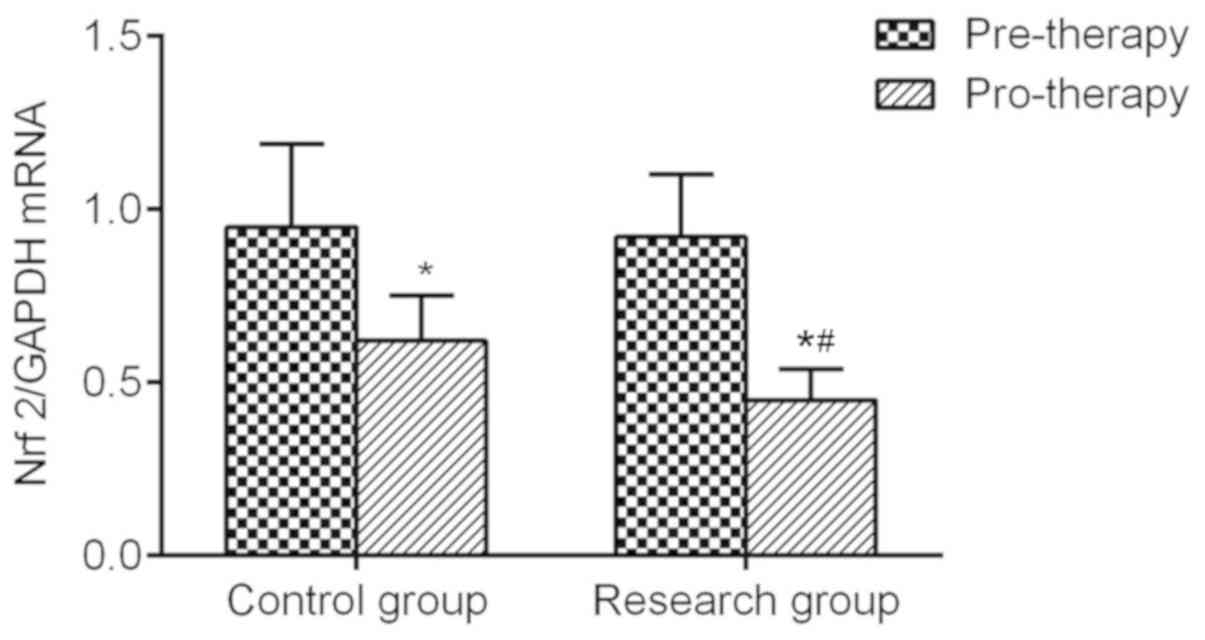|
1
|
Urakami T, Suzuki J, Mugishima H, Amemiya
S, Sugihara S, Kawamura T, Kikuchi T, Sasaki N, Matsuura N and
Kitagawa T: Screening and treatment of childhood type 1 and type 2
diabetes mellitus in Japan. Pediatr Endocrinol Rev. 10 (Suppl
1):S51–S61. 2012.
|
|
2
|
Halban PA, Polonsky KS, Bowden DW, Hawkins
MA, Ling C, Mather KJ, Powers AC, Rhodes CJ, Sussel L and Weir GC:
β-cell failure in type 2 diabetes: Postulated mechanisms and
prospects for prevention and treatment. J Clin Endocrinol Metab.
99:1983–1992. 2014. View Article : Google Scholar : PubMed/NCBI
|
|
3
|
Mu J, Woods J, Zhou YP, Roy RS, Li Z,
Zycband E, Feng Y, Zhu L, Li C, Howard AD, et al: Chronic
inhibition of dipeptidyl peptidase-4 with a sitagliptin analog
preserves pancreatic beta-cell mass and function in a rodent model
of type 2 diabetes. Diabetes. 55:1695–1704. 2006. View Article : Google Scholar : PubMed/NCBI
|
|
4
|
Robertson RP, Harmon J, Tran PO, Tanaka Y
and Takahashi H: Glucose toxicity in beta-cells: Type 2 diabetes,
good radicals gone bad, and the glutathione connection. Diabetes.
52:581–587. 2003. View Article : Google Scholar : PubMed/NCBI
|
|
5
|
Retnakaran R: Novel strategies for
inducing glycemic remission during the honeymoon phase of type 2
diabetes. Can J Diabetes. 39:(Suppl). S142–S147. 2015. View Article : Google Scholar : PubMed/NCBI
|
|
6
|
Marchetti P, Lupi R, Del Guerra S,
Bugliani M, D'Aleo V, Occhipinti M, Boggi U, Marselli L and Masini
M: Goals of treatment for type 2 diabetes beta-cell preservation
for glycemic control. Diabetes Care. 32 (Suppl 2):S178–S183. 2009.
View Article : Google Scholar : PubMed/NCBI
|
|
7
|
Gabir MM, Hanson RL, Dabelea D, Imperatore
G, Roumain J, Bennett PH and Knowler WC: Plasma glucose and
prediction of microvascular disease and mortality: Evaluation of
1997 American Diabetes Association and 1999 World Health
Organization criteria for diagnosis of diabetes. Diabetes Care.
23:1113–1118. 2000. View Article : Google Scholar : PubMed/NCBI
|
|
8
|
Livak KJ and Schmittgen TD: Analysis of
relative gene expression data using real-time quantitative PCR and
the 2(-Delta Delta C(T)) method. Methods. 25:402–408. 2001.
View Article : Google Scholar : PubMed/NCBI
|
|
9
|
Chiu KC, Chu A, Go VL and Saad MF:
Hypovitaminosis D is associated with insulin resistance and beta
cell dysfunction. Am J Clin Nutr. 79:820–825. 2004. View Article : Google Scholar : PubMed/NCBI
|
|
10
|
Meier JJ and Bonadonna RC: Role of reduced
β-cell mass versus impaired β-cell function in the pathogenesis of
type 2 diabetes. Diabetes Care. 36 (Suppl 2):S113–S119. 2013.
View Article : Google Scholar : PubMed/NCBI
|
|
11
|
Rorsman P and Ashcroft FM: Pancreatic
β-cell electrical activity and insulin secretion: Of mice and men.
Physiol Rev. 98:117–214. 2018. View Article : Google Scholar : PubMed/NCBI
|
|
12
|
Robertson RP: Beta-Cell deterioration
during diabetes: What's in the gun? Trends Endocrinol Metab.
20:388–393. 2009. View Article : Google Scholar : PubMed/NCBI
|
|
13
|
White MG, Shaw JA and Taylor R: Type 2
diabetes: The pathologic basis of reversible β-Cell dysfunction.
Diabetes Care. 39:2080–2088. 2016. View Article : Google Scholar : PubMed/NCBI
|
|
14
|
Steven S and Taylor R: Restoring
normoglycaemia by use of a very low calorie diet in long- and
short-duration type 2 diabetes. Diabet Med. 32:1149–1155. 2015.
View Article : Google Scholar : PubMed/NCBI
|
|
15
|
Robertson RP, Harmon J, Tran PO and
Poitout V: Beta-cell glucose toxicity, lipotoxicity, and chronic
oxidative stress in type 2 diabetes. Diabetes. 53 (Suppl
1):S119–S124. 2004. View Article : Google Scholar : PubMed/NCBI
|
|
16
|
Jung KY, Kim KM and Lim S: Therapeutic
approaches for preserving or restoring pancreatic β-Cell function
and mass. Diabetes Metab J. 38:426–436. 2014. View Article : Google Scholar : PubMed/NCBI
|
|
17
|
Mizukami H, Takahashi K, Inaba W, Osonoi
S, Kamata K, Tsuboi K and Yagihashi S: Age-associated changes of
islet endocrine cells and the effects of body mass index in
Japanese. J Diabetes Investig. 5:38–47. 2014. View Article : Google Scholar : PubMed/NCBI
|
|
18
|
Dragun Z, Filipović Marijić V, Krasnići N,
Ramani S, Valić D, Rebok K, Kostov V, Jordanova M and Erk M:
Malondialdehyde concentrations in the intestine and gills of Vardar
chub (Squalius vardarensis Karaman) as indicator of lipid
peroxidation. Environ Sci Pollut Res Int. 24:16917–16926. 2017.
View Article : Google Scholar : PubMed/NCBI
|
|
19
|
Zhao QB, Wang HF, Sun CF, Ma AQ and Cui
CC: Effect of short-term intensive treatment with insulin pump on
beta cell function and the mechanism of oxidative stress in newly
diagnosed type 2 diabetic patients. Nan Fang Yi Ke Da Xue Xue Bao.
27:1878–1879. 2007.(In Chinese). PubMed/NCBI
|
|
20
|
Bao W, Song F, Li X, Rong S, Yang W, Zhang
M, Yao P, Hao L, Yang N, Hu FB and Liu L: Plasma Heme Oxygenase-1
concentration is elevated in individuals with type 2 diabetes
mellitus. PLoS One. 5:e123712010. View Article : Google Scholar : PubMed/NCBI
|
|
21
|
Fukushima-Uesaka H, Saito Y, Maekawa K,
Kamatani N, Kajio H, Kuzuya N, Noda M, Yasuda K and Sawada J:
Genetic variations and haplotype structures of transcriptional
factor Nrf2 and its cytosolic reservoir protein Keap1 in Japanese.
Drug Metab Pharmacokinet. 22:212–219. 2007. View Article : Google Scholar : PubMed/NCBI
|















